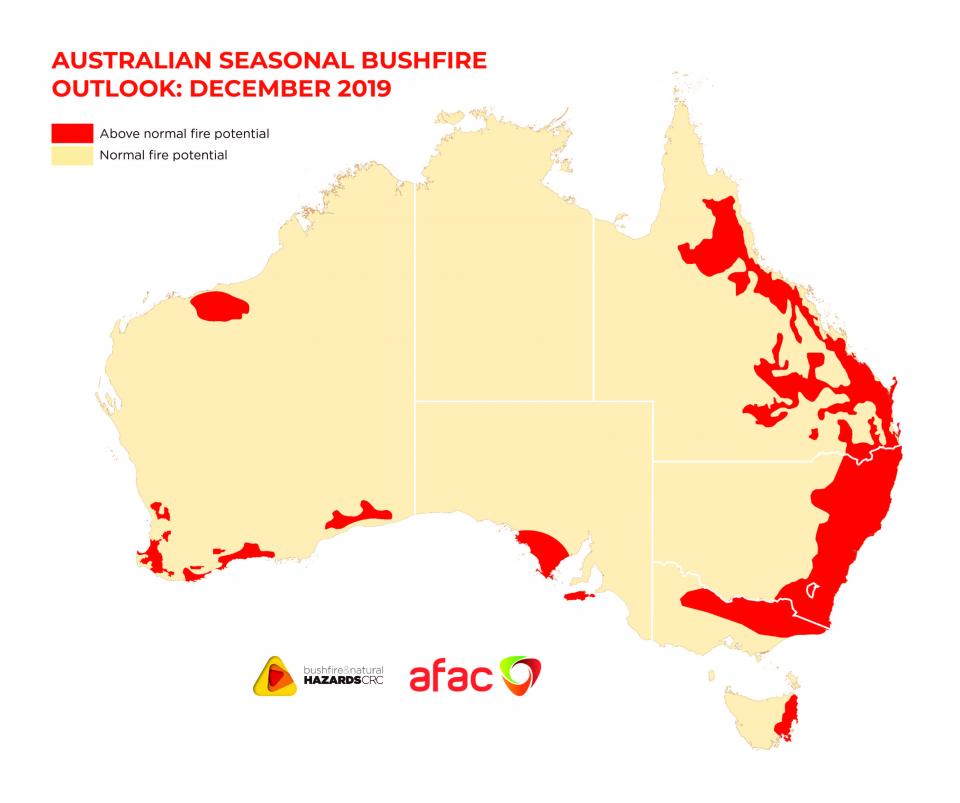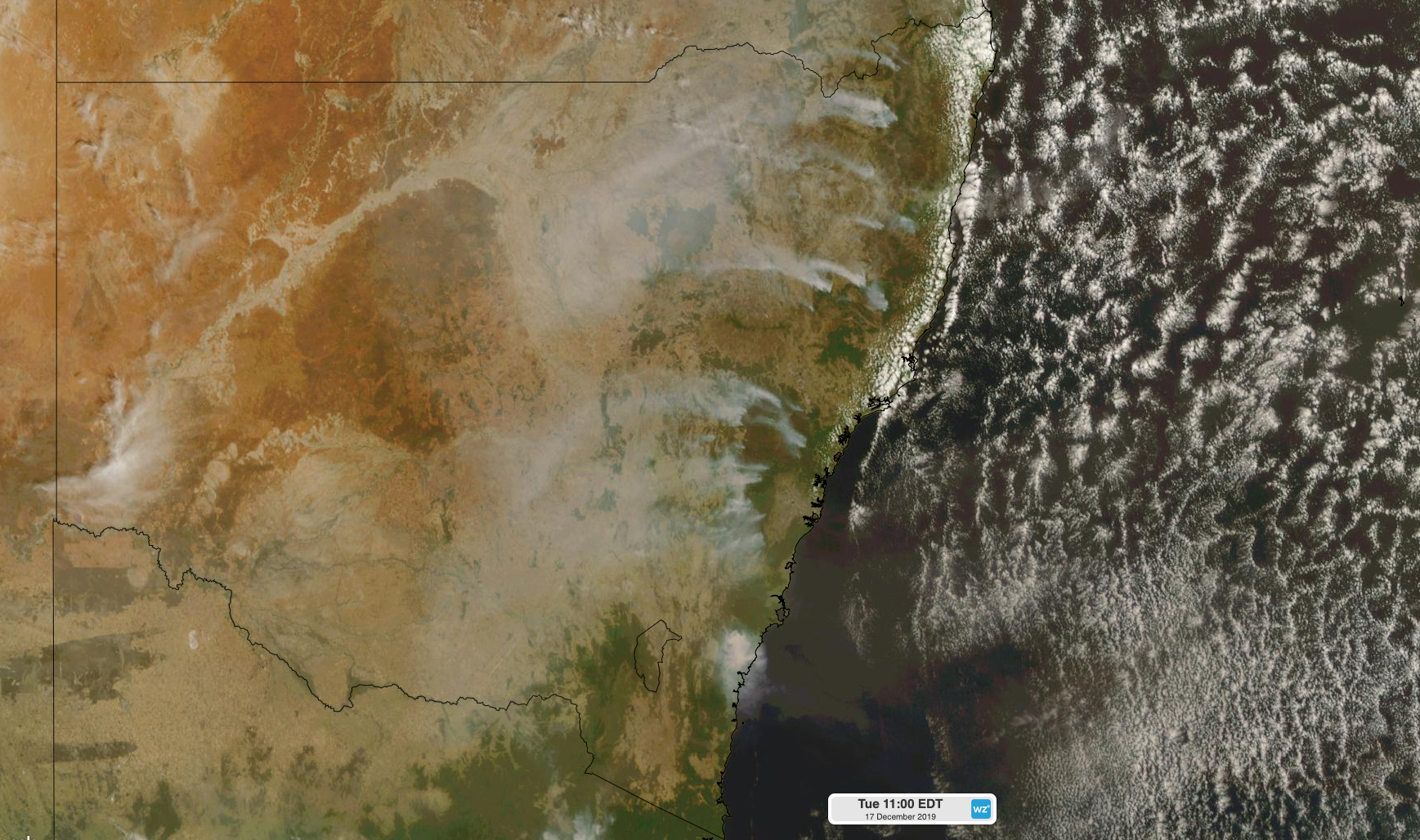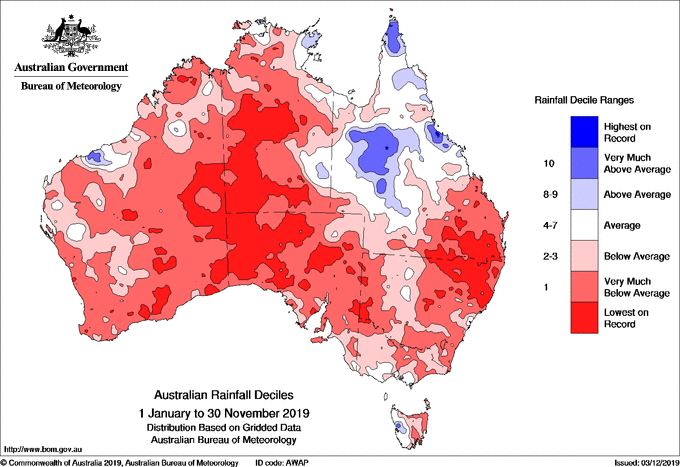Australian fire threat rolls into 2020

One of Australia's hottest and driest years on record is likely to see increased fire danger persist for large parts of the country as we head into 2020.
Australia's Bushfire and Natural Hazard Cooperative Research Centre (BNH CRC) released an updated version of its seasonal bushfire outlook this week. According to the report, there will be above normal fire potential in parts of every state and territory except for the NT as we head into the new year.

Image: Australia's bushfire seasonal outlook for the 2019/20 season, December 2019 update. Source: BNH CRC
This outlook isn't likely to come as a surprise to many people, with large swathes of Australia - particularly NSW - already scorched by flames during the last few months.
As of mid December, this season's fires had already destroyed more than 700 homes in NSW alone. According to the Rural Fire Service, there were still 115 fires burning across the state on Tuesday morning.

Image: Satellite image showing smoke over NSW on Tuesday, December 17th.
This season's past, current and future fire activity is a result of exceptionally warm and dry weather in Australia during 2019. The country as a whole registered its second warmest and second driest January to November period on record. For some parts of the country, significant rainfall deficiencies have been building up during the last several years.

Image: Rain deciles for January to November 2019.
While the cause of any individual bushfire is complex, there are some discernible links between this season's prolific fire activity in NSW and climate change.
According to the Bureau of Meteorology's latest State of the Climate report, the number of bad fire weather days has increased across many parts of Australia in recent decades, particularly the eastern and southeastern states. There has also been an increase in the length of the fire weather season for some parts of the country. The effects of climate change, such as increasing temperatures, are contributing to these changes.

Image: Trends from 1978 to 2017 in the annual (July to June) sum of the daily Forest Fire Danger Index - an indicator of the severity of fire weather conditions. Source: Bureau of Meterology.
But while parts of Australia are having an exceptionally active fire season, this hasn't been the case everywhere.
The Copernicus Atmosphere Monitoring Service (CAMS) uses satellite observations to track bushfire activity, and the pollution they emit, across our planet.
According to the CAMS database, global fire activity between January and November in 2019 has actually been fairly average, if not slightly lower than usual, when compared to the same period in other years this century. According to the CAMS, this is in line with an observed trend of declining global fire emissions during the last 16 years.
🔥 #ICYMI Fires have been in the news in 2019, but how unusual were they? Read the @Copernicus #Atmosphere Monitoring Service's global roundup of wildfires this year to find out.
— Copernicus ECMWF (@CopernicusECMWF) December 16, 2019
Full Detailsâž¡ï¸https://t.co/PZWZCONrrI pic.twitter.com/gmduCrBMJ3
Fires will be burning in most states and territories during the final weeks of 2019. Visit your state or territory's fire service website for the latest details and advisories on these fires.